第65章
This explanation is easily proved false by painting the disk with narrow green and gray concentric rings, and giving each a different saturation.The contrast appears through there is no ground-color, and no longer a single difference, but many.The facts which Helmholtz brings forward in support of his theory are also easily turned against him.He asserts that if the color of the ground is too intense, or if the gray ring is bordered by black circles, the contrast becomes weaker; that no contrast appears on a white scrap held over the colored field; and that the gray ring when compared with such scrap looses its contrast-color either wholly or in part.Hering points out the inaccuracy of all the claims.
Under favorable conditions it is impossible to make the contrast dissappear by means of balck enclosing lines, although they naturally form a disturbing element; increase in the saturation of the field, if disturbance through increasing brightness-contrast is to be avoided, demands a darker grey field, on which contrast-color are less easily perceived; and careful use of the white scrap leads to entirely different results.The contrast-color does appear upon it when it is first placed above the colored field; but if it is carefully fixated, the contrast-color diminishes very rapidly both on it and on the ring, from causes already explained.To secure accurate observation, a complication through successive contrast should be avoided thus: first arrange the white scrap, then interpose a gray screen between it and the disk, rest the eye, set the wheel in motion, fixate the scrap, and then have the screen re- moved.The contrast at once appears clearly, and its disappearance through continued fixation can be accurately watched.
Brief mention of a few other cases of contrast must suffice.The so-called mirror experiment consists of placing at an angle of 45 a green (or otherwise colored) pane of glass, forming an angle with two white surfaces, one horizontal and the other vertical.
On each white surface is a blackspot.The one on the horizontal surface is seen through the glass and appears dark green, the other is reflection from the surface of the glass to the eye, and appears by contrast red.
The experiment may be so arranged that we are not aware of the presence of the green glass, but think that we are looking directly at a surface with green and red spots upon it; in such a case there is no deception of judgment caused by making allowance for the colored medium through which we think that we see the spot, and therefore the psychological explanation does not apply.On excluding successive contrast by fixation the contrast soon disappears as in all similar experiments.
Colored shadows have long been thought to afford a convincing proof of the fact that simultaneous contrast is psychological in its origin.They are formed whenever an opaque object is illuminated from two separate sides by lights of different colors.When the light from one source is white, its shadow is of the color of the other light, and the second shadow is of a color complementary to that of the field illuminated by both lights.If now we take a tube, blackened inside, and through it look at the colored shadow, none of the surrounding field being visible, and then have the colored light removed, the shadow still appears colored, although 'the circumstances which caused it have disappeared.'
This is regarded by the psychologists as conclusive evidence that the color is due to deception of judgment.It can, however, easily be shown that the persistence of the color seen through the tube is due to fatigue of the retina through the prevailing light, and that when the colored light is removed the color slowly disappears as the equilibrium of the retina becomes gradually restored.When successive contrast is carefully guarded against, the simultaneous contrast, whether seen directly or through the tube, never lasts for an instant on removal of the colored field.The physiological explanation applies throughout to all the phenomena presented by colored shadows.
If we have a small field whose illumination remains constant, surrounded by a large field of changing brightness, an increase or decrease in brightness of the latter results in a corresponding apparent decrease or increase respectively in the brightness of the former, while the large field seems to be unchanged.Exner says:
"This illusion of sense shows that we are inclined to regard as constant the dominant brightness in our field of vision, and hence to refer the changing difference between this and the brightness of a limited field to a change in brightness of the latter."
The result, however, can be shown to depend not on illusion, but on actual retinal changes, which alter the sensation experienced.The irritability of those portions of the retina lighted by the large field becomes much reduced in consequence of fatigue, so that the increase in brightness becomes much less apparent than it would be without this diminution in irritability.The small field, however, shows the change by a change in the contrast-effect induced upon it by the surrounding parts of the retina.
The above cases show clearly that physiological processes, and not deception of judgment, are responsible for contrast of color.To say this, however, is not to maintain that our perception of a color is never in any degree modified by our judgment of what the particular colored thing before us may be.We have unquestionable illusions of color due to wrong inferences as to what object is before us.Thus Vou Kriest speaks of wandering through evergreen forests covered with snow, and thinking that through the interstices of the boughs he saw the deep blue of pine-clad mountains, cov- ered with snow and lighted by brilliant sunshine; whereas what he really saw was the white snow on trees near by, lying in shadow】.